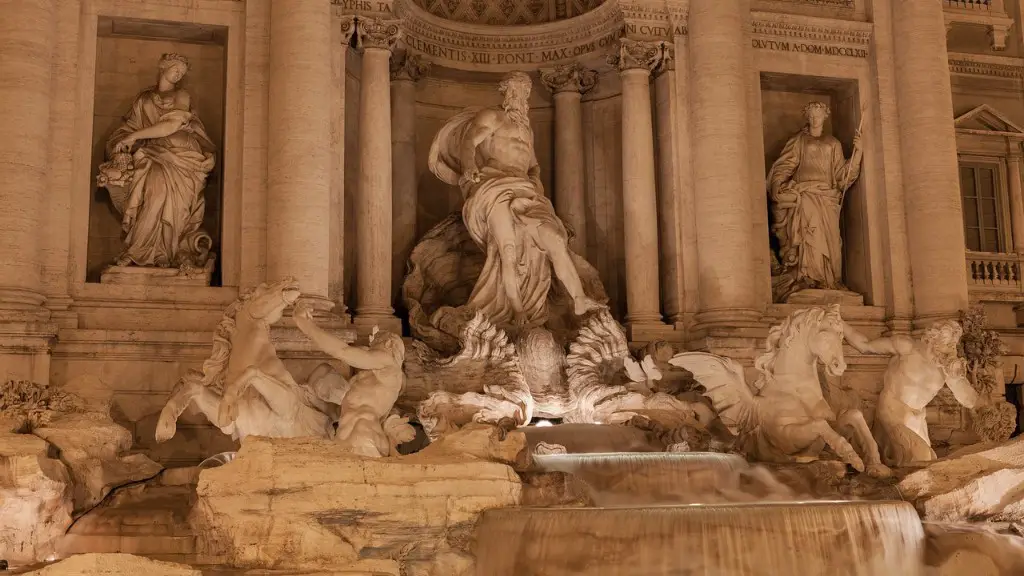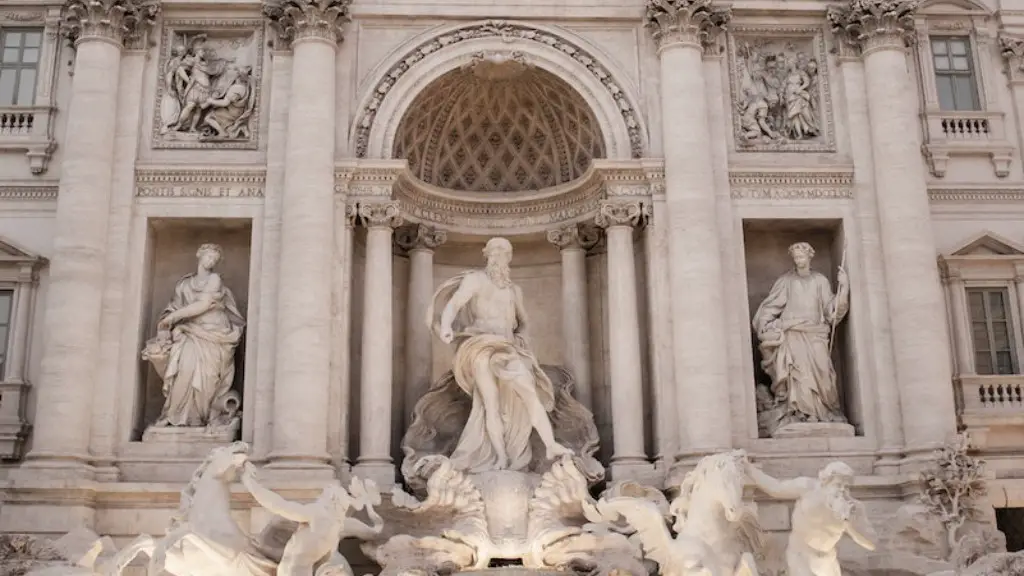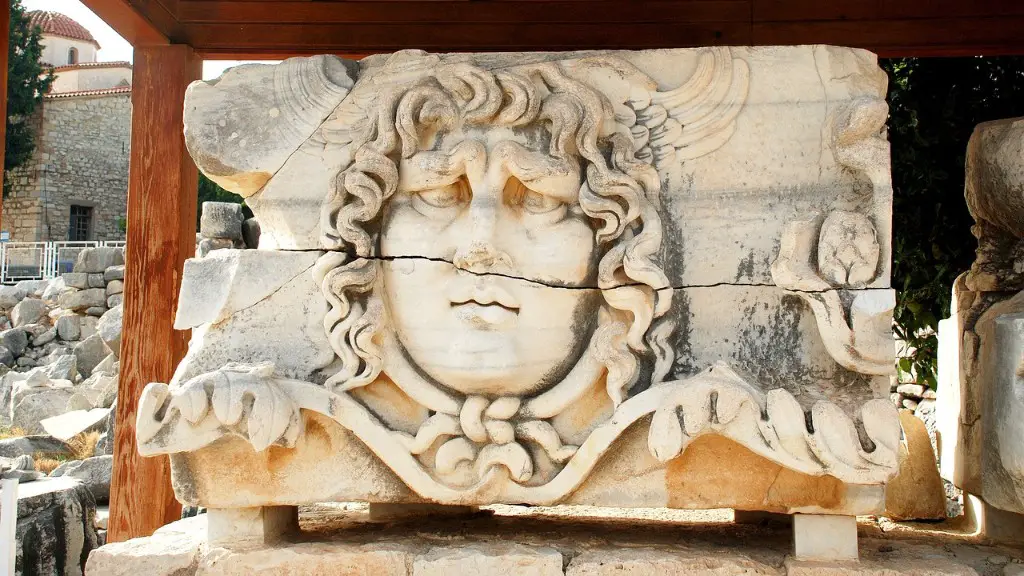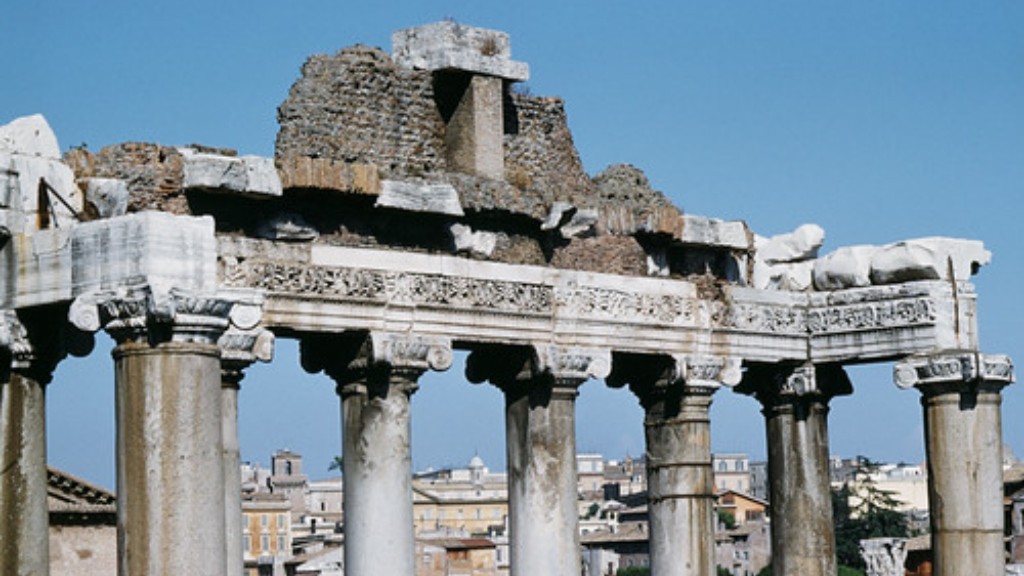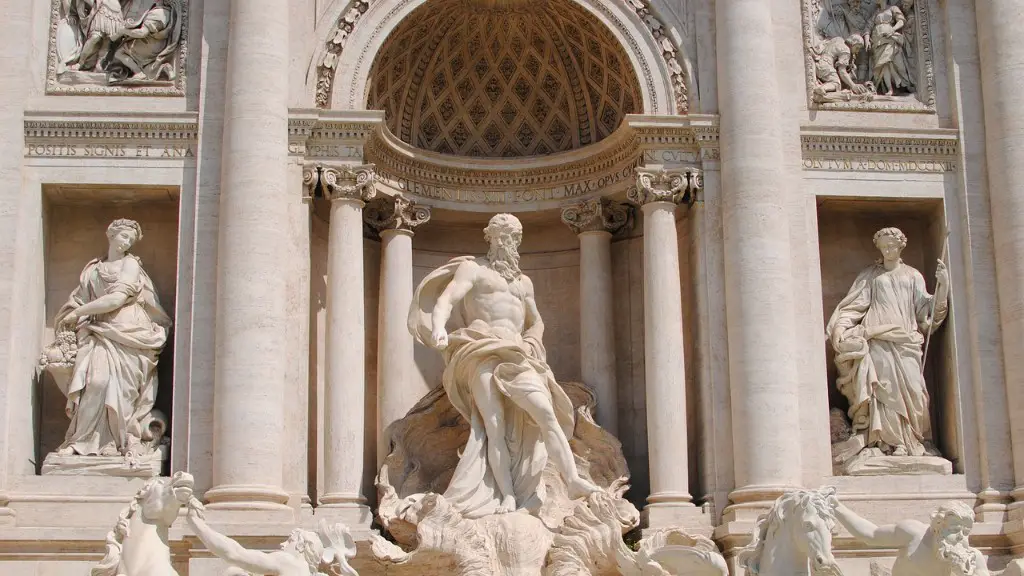The Ancient Romans have had a great influence on modern European and American culture. They made many unique and significant contributions to architecture and city planning which are still felt today from Washington D.C, to Istanbul. The Romans were also an innovative and influential people, introducing many groundbreaking innovations. Houses were no exception, and many of the ideas and designs that the Romans employed around their houses and villas still resonate in Western cultures.
Traditional Ancient Roman houses were made of mud, bricks and stone. They were usually built around a central courtyard, often with a screened porch around the side. The main house was usually two stories, but some had a third. The interior of the house was decorated with frescoes, mosaics and other ornate decorations, with marble and precious stones being popular materials. Ancient Roman houses also often featured recreational areas with swimming pools and saunas, as well as gardens, aviaries, and fishponds. It was not uncommon for Roman houses to have a separate area for private worship.
Inside the house, a variety of materials were used in the construction and decoration. Plaster, wood and stone were popular materials for walls, floors, furniture and decorations. The roofs were covered with thatch or tiles, and skylights were sometimes installed for additional natural light. Windows were often made of thin sheets of marble and colored glass.
The Ancient Romans also employed a variety of heating and cooling systems in their houses, such as underfloor heating and open-air courtyards with fountains and awnings. Ventilation and air conditioning were also seen in some houses. Houses were usually constructed so they could be easily expanded as the family grew.
Security was also important to the Ancient Romans. Many houses were designed with heavy wooden doors and walls, and often included watch towers. The use of locks and keys was also common in Ancient Roman homes.
Overall, Ancient Roman houses were elaborate and sophisticated. They feature a variety of styles and layouts, and rely heavily on natural elements such as marble and stone, as well as on engineering innovations such as ventilation and heating systems. With their intricate designs and innovative amenities, it’s no surprise that they were so influential in Western architecture and city planning.
Furnishings and Accessories
One of the most distinguishing features of Ancient Roman houses was their furnishings and accessories. The houses were usually decorated with art and other decorations, and elaborate pieces of furniture were often commonplace. Ancient Roman furniture was often made of high-quality materials and was often elaborately carved and painted.
The most popular items were couches, beds and chairs, as well as tables and shelves. The wealthy also included statues and urns, as well as a variety of decorative items such as vases, bowls and lamps. Art was also popular in Roman houses, with frescoes, mosaics, and other painting and sculptures adorning the walls.
In addition to the art and decorations, the floors and walls were often made of different materials such as tiles, marble and stone, and the ceilings were often decorated with intricate designs. All of these elements combined to create a luxurious and beautiful environment for the inhabitants.
Furniture and accessories were not just for decoration and comfort though, they were also a reflection of the status and wealth of the house owners. The wealthier the inhabitant, the more expensive and intricate the furnishings and decorations were.
Roman Architecture
Ancient Roman architecture played a hugely influential role in the development of Western architecture. The Romans developed a set of principles, known as the “Orders,” which governed how building should be designed and built. These principles included architectural elements such as columns and arches, as well as the layout of the building. The order of the building’s components also was important, with heavy, strong materials forming the base of the structure and lighter materials and decorations forming the upper tiers.
The Romans also employed a variety of building materials such as stone, brick, marble and wood. These materials were often combined in interesting and innovative ways. They also used an extensive system of water proofing and drainage, which is still in use today in many cities.
Roman architecture also included a variety of inventions and advances such as large stone amphitheatres, aqueducts and arch bridges. These structures were designed to be both imposing and elegant, and were often the centrepiece of cities. The engineering achievements of the Romans are still admired today and have had a great influence on modern building.
Roman Sanitation
In addition to their admired architecture, the Ancient Romans also developed an extensive system of sanitation. This system included a network of sewers, constructed from stone and clay, along with purification systems to reduce the risk of disease. The Romans also developed elaborate systems for supplying water to their cities, with aqueducts and public baths.
In addition, the Ancient Romans experimented with other sanitation techniques such as water filtration. This was conducted in a variety of ways, such as filtering through sand and charcoal and the use of lead pipes. This concept eventually led to the invention of the modern day toilet, which revolutionized sanitation even further.
The Romans also developed a variety of waste management techniques. Some of the techniques they employed included the use of composting and burying, as well as incineration. They also built an extensive network of roads, which allowed them to move goods and waste around their cities quickly and efficiently.
Technology in Ancient Roman Houses
Ancient Roman houses also had a variety of technologies installed which allowed them to achieve a level of convenience and luxury unparalleled at the time. One of the most prominent of these technologies was a primitive heating system, known as hypocaustum. This system made use of hot air to heat and cool rooms, as well as to circulate air throughout the building. It was a sophisticated system for its time and allowed Ancient Romans to have constant access to hot or cold air in their homes, regardless of the time of year.
In addition, Ancient Roman houses also had a variety of innovative lighting systems. This included lamps and candles, but also more advanced systems such as hanging lamps and pulley systems. These generated light without having to constantly relight them, and were a great convenience for the inhabitants of the houses.
The Ancient Romans also utilized a variety of other technologies including alarm systems, primitive plumbing and drainage, and fire protection systems. All of these inventions helped to make life more convenient and enjoyable for the people who inhabited the houses. They also played an important role in the development of modern technologies and the increasing levels of convenience we experience today.
Roman Construction Techniques
In addition to their impressive inventions and technologies, the Ancient Romans also developed effective construction techniques which allowed them to construct strong and durable buildings.
The Romans are credited with the invention of concrete, which they used in their building projects. This invention, along with the use of stone, brick, and other materials, allowed them to construct structures which were able to withstand the elements and the passing of time.
The Ancient Romans also developed a variety of tools to assist them in their building projects, from basic tools such as hammers and chisels, to more complex tools such as winches and cranes. These tools allowed them to build larger and more elaborate structures with greater speed and efficiency.
The Romans also devised a variety of construction techniques which allowed them to create intricate and impressive designs from a variety of materials. From mosaic designs to curved arches, the Romans were able to create a wide variety of design elements which are still admired and imitated today.
Decline of Ancient Roman Houses
The heyday of Ancient Roman houses came to an end after the fall of the Roman Empire in the 5th century AD. Many of the houses were abandoned and eventually crumbled, with only ruins remaining.
The decline of Roman houses was also due to changes in the culture and lifestyle of the Romans. The introduction of Christianity and the emergence of the feudal system saw a shift away from elaborate and luxurious houses. Wealthier families moved away from the cities and lived more simply in the countryside, while others moved into the cities, leading to the rise of apartment dwellings.
The decline of Ancient Roman houses also saw a shift in materials used for construction. Wood and thatch replaced stone and marble in many places, and the elaborate decoration of houses was seen less and less.
Despite the decline of Ancient Roman houses, their legacy still lives on today. The innovative designs and engineering feats of the Romans can still be seen in modern architecture and building techniques, and their inventions and inventions continue to inspire those practicing the craft today.

